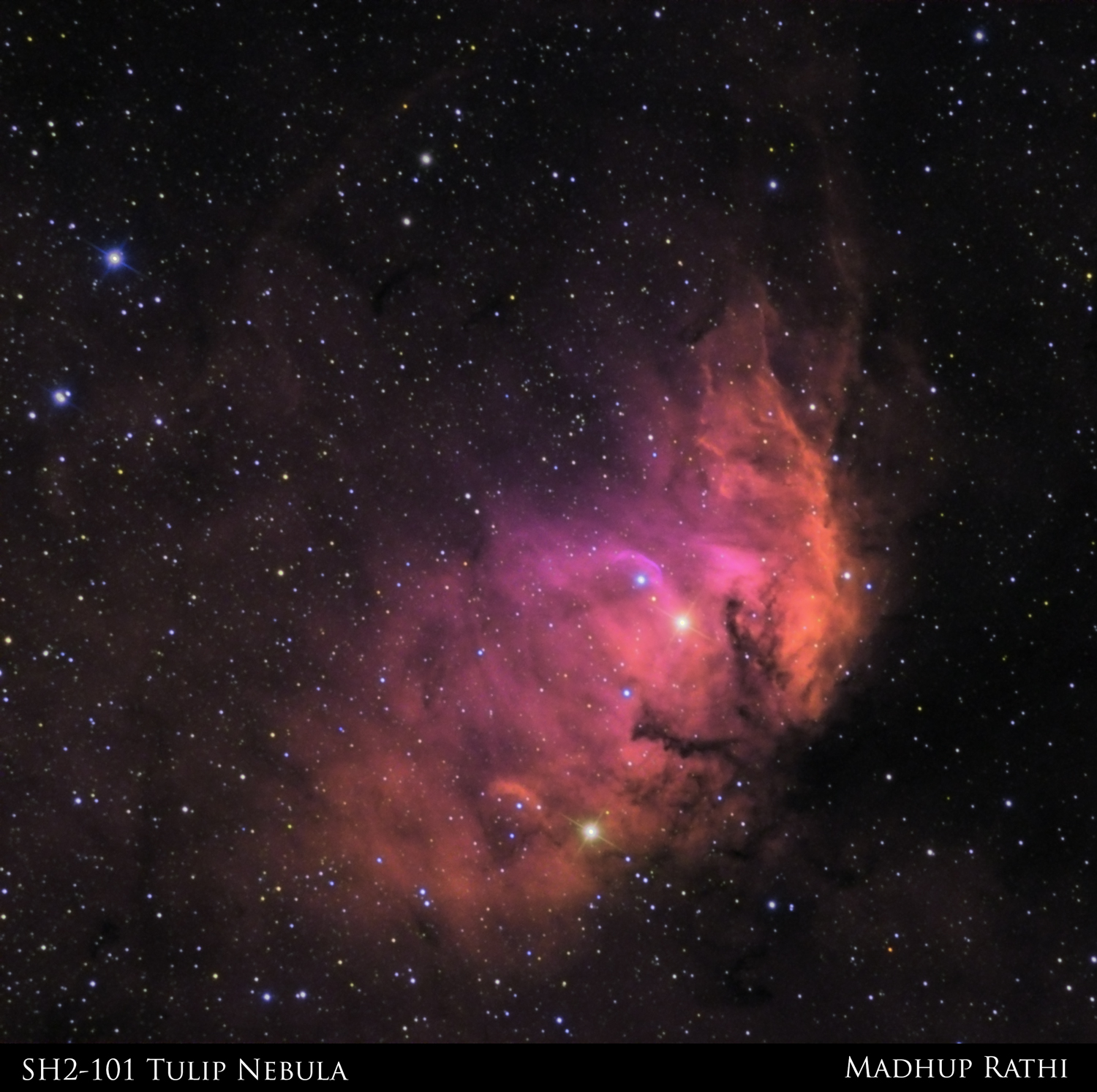Along the plane of our Milky Way Galaxy toward the nebula rich constellation Cygnus the Swan, this image is of SH2-101, popularly called the Tulip Nebula. About 8,000 light-years distant and 70 light-years across the complex and beautiful nebula blossoms at the center of the composite image. Ultraviolet radiation from young, energetic stars, mainly from star HDE 227018 (the bright blue star just to the right of the center of the image), ionizes the atoms of different gases and powers the visible light emission from the Tulip Nebula.
Red, green, and blue hues map emission from ionized hydrogen sulfur and oxygen atoms, making it a false-color image. If I took this image in natural colors, it would look monotonous as this will be mostly pink color image, but, using these special filters and mapping them to these 3 colors to create a beautiful image.
Took this image over 15.5 hours (11 images of Hydrogen Alpha, 11 images of SII Sulfur and 9 images of OIII Oxygen of 30 minutes each).
